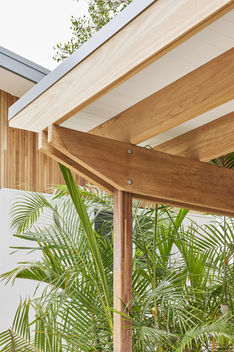
High Performance Homes
Creating Sustainable, Future Homes

Criteria for
High-Performance Homes
The definition of a High-Performance home doesn’t exist and is complicated by the fact that any home that exceeds the code minimum could be considered high-performance. At Progressive Building, a High-Performance home has:
-
Maximum level of comfort during warm and cold months
-
Low Heating Load (40W/m2 maximum)
-
Low Heating / Cooling Demand (35kWH/m2/yr)
-
Airtightness rating at or below 0.6 air changes (in volume) per hour
-
Overheating is limited to 15% of the year
-
High Levels of Insulation
-
Balanced Heat Recovery Ventilation (filtered air)
-
Highly Insulating Windows
-
Mitigating Thermal Bridging
-
Thermal Modelling in PHPP
We strive to design & build a home that is recognisably, traditional in shape and form. The intention is not to look at a Progressive Building home and immediately see its high-performance credentials. Only when you walk into the home do you notice a completely different environment than any home, you’re accustomed to living in. From the outside, the home is an expression of the homeowner’s personal design preferences, yet inside it provides a quiet shelter from the outside world, an experience like no other.

What are Progressive Building’s
High-Performance principles?
Including Progressive Building’s adopting Passive House performance criteria outlined above, we focuses on:
-
Use of sustainable building products, including consideration of how much processing has gone into a product’s life cycle
-
Reducing the amount of concrete used for a project and utilising low-carbon concrete
-
Removing structural steel wherever possible
-
Integration of solar and backup power generation or storage
-
Reducing water usage
-
Integration of systems for energy efficiency (hot water & heating using the same heat pump)
-
Using 13mm plasterboard throughout for impact resistance and sound reduction
Progressive Building incorporates methodology to manage temperatures on both ends of the scale of heating and cooling. This process should be unobtrusive, so your home is incredibly quiet. The ventilation system functions without you having to engage with it. Having minimum double-glazed windows controls internal heating and cooling, as well as minimising external sounds. The overall result is a feeling of comfort as well as having an extremely quiet house that is protected from the harsh conditions outside.
So, while a Passive House and High-Performance home initially sound similar, they do come with their differences, which is important to bear in mind when building your next home. A High-Performance home by Progressive Building balances energy usage, performance, cost, architectural merit, and resilience. This way we can achieve a great result that may have limitations otherwise.
Get Inspired





